Vacuum Induction Melting Furnace
Top SuperbMelt vacuum induction platinum/palladium/gold/silver melting furnace on the market
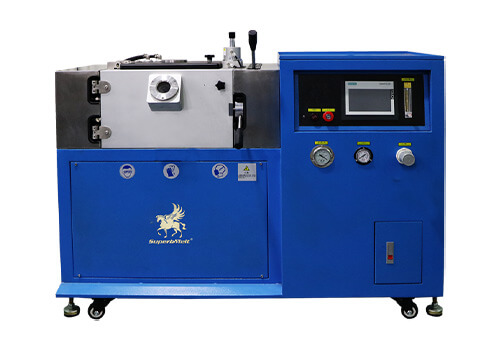
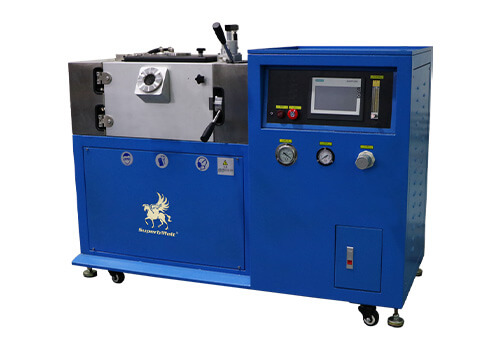
Vacuum Induction Melting Furnace is a specialized piece of equipment used in the fields of metallurgy and materials science for the production of high-quality alloys, superalloys, and other advanced materials. This type of melting furnace is commonly utilized in industries such as aerospace, automotive, and jewelry manufacturing.
SuperbMelt’s Vacuum Induction Melting Furnace, capable of melting 1-3 kilograms of gold, silver, and palladium in a single operation, is the ideal choice for small-scale jewelry manufacturers. It offers higher purity and better quality than conventional induction melting furnaces.
If you wanna check other metal melting furnaces, Please click here.
- The vacuum induction melting furnace is composed of the vacuum furnace body, medium frequency power, vacuum system, cooling system and electric control system, all these contribute to the efficiency of the furnace.
- Our furnaces range from small vacuum furnaces small vacuum furnaces measured in grams to bigger vacuum furnaces. This however gives users flexibility with regards to batch size.
- The vacuum induction melting furnace gives you an accurate temperature control with the electric control system, you are sure to be aware of what is ongoing within the vacuum induction furnace during the melting process. The cooling system also contributes to the controlled melting temperature. The cooling system is a centralized cooling water and discharge device in the vacuum induction furnace.
- The vacuum induction furnace totally eradictes gases from the molten metals. The presence of these gases will result in a quick oxidation process.
- The vacuum induction melting furnace creates very close compositional tolerances, which implies that metals melted under the vacuum induction condition have the same level of consistency.
- Superbmelt vacuum induction melting furnaces are highly reliable and give high productivity. Melting super alloys and other metals that gives you a high quality finish has been made simple with our vacuum induction furnace. Melting cobalt, stainless steel, nickel etc, do not oxidize easily.
- Our vacuum induction furnace is applicable to industries that make use of heavy alloys like aircrafts and nuclear industries, it is also used for remelting electrodes, etc.
| Model number | SPB-VTB15 |
| Power source | 3 phase 380V, 50/60Hz |
| Power | 15 kw |
| Applicable metal | Gold, Silver, Platinum, Palladium, and their alloys |
| Melting time | 7-10 minutes |
| Max capacity | Palladium: 2 kg Gold: 3 kg Silver: 1.6 kg |
| Max temperature | 2600℃ |
| Water cooling requirement | ≥0.3Mpa, flow rate≥20L/min, ≤45℃ |
| Dimension | 690*1200*1100mm |
| Weight | 220 kg |
| Heating technology | Induction heating |
Why SuperbMelt Vacuum Induction Melting Furnace



Any Question About SuperbMelt Vacuum Induction Melting Furnace

2 years warranty
The warranty for our machine is one year longer than the warranty provided by other factories.

ISO CE SGS approved
Professional certification bodies certify that the machines are of high quality.

Strong service team
We will give response within 24 hours against your problem by our professional engineer.
More Gold Melting and Casting Machinery For Your Choice
Any Question About SuperbMelt Mini Gold Melting Furnace
Vacuum Induction Melting Furnace Buying Guide
Can An Ordinary Open Melting Furnace Really Satisfy all Metal Smelting?
Smelting involves obtaining metal from a mineral-bearing ore. This process involves the reduction of metal oxides or ore into metal and the formation of non-metal oxide waste known as slag. Metals were smelted traditionally using a bonfire long before now.
A furnace (open or closed) is required to smelt metal ores because these ores have to be heated at a very high temperature to produce pure metals, much higher than what an open fire can produce. Using a furnace helps to maintain certain chemical conditions during smelting.
In an open melting furnace, there is a very high possibility of air getting into the molten metal because of the absence of vacuum that seals off air when melting is ongoing. This furnace is not advisable for smelting metals because the quality of metals are compromised when air gets into molten metal before casting, leading to oxidation and brittleness of such metals.
A closed furnace which is also a vacuum melting smelts and melts various types of metals and super alloys under a vacuum condition. This simply means that no gas or air gets into the melting chamber during the melting process. Air is known to cause fast oxidation within metal, therefore making the metal deteriorate very fast. The closed furnace is highly recommended for efficient and high quality smelting and melting.
1.1, Easily Oxidized Metals are Easily Contaminated
Oxidation in metals usually occurs when the iron molecules in a metal react with oxygen in the presence of water to produce iron oxide. Oxidation usually appears on metals as red formed, scaly, loose, and easily falls away exposing more basis material to the environment. Oxidation on certain types of metals serves to protect them. Aluminium oxide, copper carbonate, and chromium oxide acts as protective coatings for the underlying metals.
Not all metals contain iron but they can corrode or tarnish in other oxidizing reactions.
Noble metals such as platinum, palladium, silver, gold, etc resists oxidation in their natural state. Many corrosion resistant metals have been invented by humans such as stainless steel and brass.
One would however think that all oxidation-resistant metals are classified as noble metals, but that is not the case. Titanium, niobium and tantalum all resist oxidation, but they are not classified as noble metals. Metals that resist oxidation are opposite of metals that are prone to it, they are called base metals. Base metals are aluminium, nickel, zinc, iron, steel, tin, lead, copper, brass, bronze and the alloys of these metals. All these metals can oxidize easily.
Below is a series of oxidation activities for some common metals. The table below shows the ability of metal that oxidizes very fast to the metals that least oxidizes.
1.2, The Casting Process after Melting Is Exposed to Air
It is generally recommended that metal should be melted above the melting point of the metal. It is important that the metal is protected from oxidizing and absorbing unwanted gases. Protecting the metal from coming in contact with air can be achieved in the following ways: using a gas flame, a protective inert gas such as Argon, Nitrogen, or by using flux.
Air can get entrapped in molten metal during melting and during casting, thereby causing porosity, oxidation and incomplete casting. This is why an induction furnace is often used for casting in order to prevent air from getting into molten metal.
If air then gets into metal (this cannot be avoided especially with the traditional methods of casting, the solution is to melt the metal all over again in an induction melting furnace or a vacuum induction melting furnace. An induction furnace melts the metal and no air gets into the melting chamber. The molten metal is then removed and poured in a mold.
Types and Comparison of Vacuum Melting Furnaces
2.1, SuperbMelt Vacuum Induction Melting Furnace
The vacuum induction melting furnace is used to melt metals via electromagnetic induction under vacuum. An induction furnace contains a refractory lined crucible surrounded by an induction coil located within a vacuum chamber. Metals and alloys that have a high affinity for oxygen and nitrogen are usually melted in a vacuum induction furnace to prevent contamination with these gases.
The breakthrough for the vacuum induction casting machine was in the early 20th century and it has continued to advance since then. Vacuum induction is indispensable in the manufacture of metals and alloys because the vacuum induction melting furnace has the following features:
- Flexible for melting due to small batch sizes
- Has a low level of environmental pollution
- Temperature of melting can be easily controlled
- Easy to Operate
- Able to melt high temperature metals
- Able to reduce the loss of metals and alloys
- Capable of casting high quality metals
- Able to make use of all the heat to melt within the vacuum chamber
- Able to eliminate gas in metals
- Has a chemical composition control and process control
We can describe the vacuum induction furnace as a melting crucible inside a steel shell that is connected to a high speed vacuum system system. The heart of the furnace is the crucible, with heating and cooling coils and refractory lining. Heating of the furnace is done by electric current that passes through a set of induction coils. The coils are made of copper tubing that is cooled by water flowing through the tubing.
The passage of current through the coils creates a magnetic field that induces a current in the charge inside the refectory. When the heating of the charge material is sufficient that the charge has become all molten, these magnetic fields cause the stirring of the liquid charge.
Features found in most vacuum induction melting furnaces are: casting chambers, control panels, tilt and pour mechanisms, mold holding facilities for automated and semi-automated processing, crucible, etc.
Apart from melting a wide range of metals, a vacuum induction melting furnace can also be used for:
- Refining of high purity metals and alloys
- Electrodes for remelting
- Master alloy stick for processes such as investment casting
- Casting of automotive, construction, military, aerospace components.
Vacuum induction melting was initially developed as a method to refine alloys like nickel and cobalt. Right now, there the furnace is more widely used for other metals. Many of these metals offer a high level of cleanliness and a variety of properties that allow them to be used in numerous manufacturing processes, such as melting metals for aerospace and nuclear industries. Vacuum induction melting furnaces might have been developed to create superalloys, but it can also be used for stainless steel and a host of other metals.
The process of melting with a vacuum casting machine: It is important to note that a vacuum induction melting furnace provides a non-contact melting process, i.e, the molten metal does not have a direct contact with the heating coil, therefore, making the molten metal to have no contamination. Whether you need to melt a few grams of metal in small crucibles or several kilograms of metals in large furnaces, the process of melting is the same.
The melting process is carried out using a vacuum induction furnace.
In this metallurgical process, metal is melted via electromagnetic induction under vacuum. Electrical eddy currents are used to make the melting process possible, which is not possible through other melting processes. This is because certain metals and alloys are highly combined with hydrogen and nitrogen, therefore they cannot be melted in air.
Inside the vacuum chamber, there is an induction furnace that contains a refractory lined crucible enclosed by an induction coil. The furnace is air tight and has the ability to withstand the required vacuum for processing. The metals used in vacuum induction melting have melting points up to 1800 degree celsius.
2.2, Vacuum Arc Furnace
The vacuum arc furnace is an electric furnace that directly heats the smelting metal in a vacuum furnace. In other words, a vacuum arc furnace is a furnace that uses consumable electrodes to melt under vacuum at a carefully controlled rate using heat generated by an electric arc struck between the electrode and the ingot. Exposure of the molten metal to the low near vacuum pressure reduces the amount of dissolved gases such as oxygen, nitrogen, and hydrogen in the ingot.
Heating of metal ore or scrap metal is done through an electric arc. Metallurgical furnaces can be heated with different heat sources but the vacuum arc furnace unlike the induction steel furnace, the charged metal is directly heated by the electrical arc and with the electric current running from the furnace’s terminals through the charged material.
The gas in the furnace is thin by the molten metal vapor arc that makes the arc stable, mainly for direct current. The electric furnace arc is divided according to whether the electrode is consumed in the process of melting, it is divided into a self-consuming furnace and non-self-consuming melting furnace. Most industrial applications of the vacuum arc furnace are self-consuming furnaces. Vacuum arc furnaces are used to smelt special steel, active and refractory metals like titanium.
Arc electric heat can be considered as arc resistance. The stability of arc (arc resistance) is a necessary condition for the normal production of furnace. Arc melting is used for melting metals to form alloys.
The melting process of a vacuum arc furnace: The melting process starts at a low voltage (short arc) between the electrodes and the scrap. The scrap is loaded into baskets, the scarp basket is then taken to the melt shop. The roof of the furnace swung off the furnace and the furnace is charged with scrap from the basket. Melting begins after the roof is swung back over the furnace.
The electrodes are lowered onto the scrap, an arc is struck and the electrodes are then set to bore into the layer of the shred at the top of the furnace. Once heated, the meltdown process begins. Electrodes are lowered down into the scrap to produce the arc in a low voltage condition. Once the arc is formed, the voltage is increased to speed up the melting process.
A vacuum arc furnace is applicable in: Super alloys for aerospace, melting of reactive metals for aerospace, chemical, oil and electronic industries. Copper and copper alloys for high voltage circuit breakers, die steels, tool steel for milling cutters, drill bits, etc
2.3, Electron Beam Melting Furnace
An electron beam melting furnace is often distinguished by its superior refining capacity and offers a high degree of flexibility of the heat source and the distribution of power. That is, the electron beam melting furnace uses a high-energy electron beam inside a vacuum as a means of transferring heat to the metal being melted.
Thereby making it ideal for remelting and refining of metals and alloys under high vacuum in water cooled, ceramic free copper molds. The electron beam process is employed for production of refractory and reactive metals such as tantalum, titanium, niobium, tungsten and their alloys. The electron beam furnace uses a hot cathode for the production of electrons and high voltage towards melting metals at a fast rate. The electron beam furnace performs the same function as the electric arc furnace.
The electron beam melting furnace plays an important role in the manufacturing of ultra-pure sputtering material and alloys for the electronic industry and the recycling titanium scrap.
How the electron beam melting process occurs: Electron beam guns represent high power heat sources that are able to exceed at their beam spot the melting and the evaporation temperatures of all metals at their beam spot.
By magnetic deflection and rapid scanning at high frequencies, the electron beam can be effectively directed at targets of multiple shapes. Therefore making it the most flexible heat source in remelting technology.
The electron beam strikes the target with typical power densities of 100W/cm2. Depending on the properties of the metal being melted, the power transfer efficiency ranges from approximately 50-80%.
Since electron beam melting is a surface heating method, it produces only a shallow pool at acceptable melt rates which positively affects the ingot structure as regards to porosity, segregation, etc.
The exposure of the superheated metal pool surface to the high vacuum environment at levels of 1-0.0001Pa results in an excellent degassing of molten metal.
Metallic and non-metallic constituents with vapor pressures higher than the base material are selectively evaporated, thus generating the desired high purity of the ingot material.
Rapid scanning of the beam spot along the melt surface avoids local overheating and allows a consistent production of alloys.
The Electron beam melting has four process variations:
- Drip melting- Classical method for processing refractory metals such as Tantalum and Niobium among others. Raw material in the form of bars is usually fed horizontally and drip-melted directly into the withdrawal mold. The liquid pool level is maintained by withdrawing the bottom of the growing ingot. Refining is based on degassing and selective evaporation. For repeated remelting, vertical feeding is applied.
- Cold hearth refining- Electron Beam Cold Heart Refining is of great importance for the processing and recycling of reactive metals. The feedstock is drip-melted in the rear part of a water-cooled copper hearth from where it overflows into the withdrawal mold. During the dwell time of the molten material in the hearth system gravity separation of high- and low-density inclusions are achieved in addition to the refining mechanisms described above. The hearth must be properly sized to provide sufficient dwell time of the molten metal in order to permit efficient gravity separation of high and low density inclusions.
- Button melting- Button Melting is used for a clean evaluation of superalloy samples regarding type and quantity of low-density, non-metallic inclusions. The equipment features programmed automatic sample melting and controlled directional solidification. Low-density inclusions (normally oxides) float to the surface of the pool and are concentrated in the center, on top of the solidifying button.
- Floating zone melting- Floating zone melting is one of the oldest techniques for the production of metals with highest purity.
Process control
Electron beam furnaces operate in a semi-automatic control mode. Process automation includes:
- Vacuum pump system
- Vacuum pressure control
- Cooling water system
- Material feed rate and ingot withdrawal rate
- Processor-based high voltage and emission current control
- PC-based automatic beam power distribution, data acquisition and archiving.
2.4, Comparison of Various Vacuum Furnaces: Why Choose Superbmelt Vacuum Induction Furnace
Furnace Type | Advantages | Disadvantages |
SuperbMelt Vacuum induction melting furnace | ● Makes molten metal homogenous. ● Very flexible with regard to batch size. ● Has features of temperature, pressure and stirring control. ● Able to remove dissolved gases like hydrogen. ● Creates very close compositional tolerance. ● HIgh reliability and high productivity. ● No air and slag pollution, the melted alloy is pure and performance level is higher. ● The molten steel and gas content is low. ● Metal is not easily oxidized. ● Impurities brought in by the raw materials can be partially evaporated under vacuum to purify the material. ● Saves a lot of energy. ● Protects the environment. ● Low operating cost. |
|
Vacuum arc furnace | ● Removes dissolved gases such as hydrogen, nitrogen and carbon dioxide. ● Reduction of undesired trace elements with high vapour pressure. ● Improves oxide cleanliness. ● Achieves directional solidification of the ingot from bottom to top, thereby avoiding macro-segregation and and reducing micro-segregation. ● Low energy inputs of all remelting processes. ● Total ceramic free melting process. | ● A close control of steel composition cannot be done using this method. ● Poor melting operations. ● Metals melted with this method are not as pure as metals melted with the vacuum induction furnace. ● Continuous operation of the vacuum arc furnace requires the electrode to be replaced, which requires breaking the vacuum after each melt to allow cooling. ● Melting operation takes a longer time. |
Electron beam melting furnace | ● Control within a wide range of melting rate, which provides a good macrostructure for the subsequent working of the casting. ● The possibility of an extreme superheating of the metal, with the high vacuum, makes it possible to eliminate impurities. ● Good degassing of metal in vacuum. ● The absence of contact of the molten metal with a contaminating furnace lining. ● Possibility of remelting any charge and restarting the melting process after an interruption without affecting the quality of the casting. ● Minimal material waste. ● Less tooling and set up cost. | ● Needs a proper training or skill before it can be operated. ● Surface finish is similar to sand casting. ● Commercially available materials are limited. |
From the comparison of all vacuum furnaces for melting metals and alloys, the best and most convenient of all is the Superbmelt vacuum melting furnace. Here are the benefits you derive from using the vacuum melting furnace:
- Melting requires a close temperature control, the vacuum melting furnace gives you that opportunity of monitoring the melting temperature during the melting process. This therefore means that high quality melting is guaranteed.
- With our vacuum melting furnace, affordability and proper maintenance of the melting furnace is certain. Vacuum arc furnaces and electron beam furnaces have a higher maintenance cost.
- The energy required to power the vacuum melting furnace is quite low compared to the vacuum arc furnace and electron beam furnace. Therefore, power charges are not exuberant on your cost of production.
- Since all heating and melting is in a vacuum chamber of the vacuum melting furnace, there is absolutely no gas, heat or other uncomfortable elements that make melting harmful for you or your work environment.
- Metals and alloys melted with the vacuum melting furnace do not oxidize easily, therefore, metals cast lasts longer than metals cast with other furnaces.
In-depth Study of Superbmelt Vacuum Induction Melting Furnace
3.1, Simultaneous Design of Melting and Casting
The Vacuum induction furnace involves melting of metals and alloys under vacuum conditions. Electromagnetic induction is used as the energy source for melting the metal. Induction melting works by inducing electrical eddy currents in the metal. The source is the induction coil which carries an alternating current. The eddy currents heat and eventually melt the charge.
The furnace consists of an air-tight water-cooled steel jacket, capable of withstanding the required vacuum for the melting. The metal is melted in a crucible housed in a water-cooled induction coil and the furnace is typically lined with suitable refractories. The molten metal may be poured/cast either under vacuum or inert gas environments.
3.2, What Are the Safety Designs
Worker’s safety and the safe operation of a heat related equipment is mandatory and non-negotiable, especially when operating and maintaining vacuum equipment where dangers of asphyxiation, electrocution, and explosion are real as they are with any other type of thermal processing equipment. There is no substitute for understanding the inherent dangers, taking the necessary steps and placing the right safeguards in place to prevent accidents from happening. Safety issues are a serious matter and should be treated as such by all individuals within the company. This is to say that basic safety measures such as:
- Putting on safety equipment (personal protective equipment) when operating the vacuum induction melting
- Non-workers should not be allowed near the vacuum induction melting
- Liquid should not be allowed near the induction furnace.
Gases and liquefied compressed gases used in and around vacuum furnaces fall into various categories:
- Corrosive: Products that react chemically and deteriorate materials including skin on contact.
- Cryogenic: Contact with these liquids causes “cryo burns” due to the freezing of the skin. Rapid vaporization in confined spaces can cause asphyxiation.
- Flammable: When mixed with air, oxygen, or another oxidant, these fluids burn or explode upon ignition.
- High Pressure: A sudden release of pressure may cause serious damage to personnel or equipment.
- Inert:These displace oxygen in confined spaces and threaten life support.
- Oxidant: Gases that initiate and support combustion.
- Toxic: Substances that may chemically produce injurious or lethal effects.
The explosiveness of the air/gas mixture is the primary hazard with some of these gases( hydrogen, propane and natural gas), and should not be used near an open flame or heat source as they can “self-ignite”. They are very easily oxidized and react explosively in the presence of oxidizing substances. Other toxic gases that are equally dangerous are carbon monoxide and ammonia.
Another safety measure that should be put in mind is the incident involving explosions. What do we mean by this? We often believe that vacuum furnaces are safe because the heating and cooling operations take place in sealed chambers and sometimes, especially where high pressures are involved in coded vessels. However, the belief that an “implosion” rather than an “explosion” will happen is not always true. Overheating of the furnace can occur when the cooling water pump is turned off, not in operation alongside the furnace. This can lead to an explosion.
The vacuum induction melting furnace is composed of the vacuum furnace body, medium frequency power, vacuum system, cooling system and electric control system, all these contribute to the efficiency of the furnace.
Our furnaces range from small vacuum furnaces small vacuum furnaces measured in grams to bigger vacuum furnaces. This however gives users flexibility with regards to batch size.
Conclusion: Superbmelt Vacuum Induction Furnace Is Your Best Choice
Superbmelt vacuum induction furnace is your best choice considering the fact that there are a number of features and benefits you enjoy when you use our vacuum induction furnace.
Safety: Our vacuum induction melting furnaces are totally safe for all your melting operations. The vacuum induction melting furnace is equipped with a primary safety detector, which is designed to protect you against electrical shock and warning of metal to coil penetration, a highly dangerous condition that could lead to furnace explosion.
Flexibility design: Whatever the size, whether large tons or small size melting and casting operations, our vacuum induction furnaces can handle it.
Temperature control: You have total control over the melting temperature of your vacuum furnace, thereby giving you a hitch free melting and casting processes. Hence, you don’t have to worry about your metal or alloy not reaching its melting temperature or going above its melting temperature.
Improved productivity: Melting and casting with our vacuum induction melting furnace is fast, this means that you don’t have to spend a long time during production. Therefore, you are able to meet up with production demands.
Affordable vacuum induction furnace: You get the best price of a vacuum induction furnace when you buy from us. The affordability of our vacuum induction furnace is a great investment.
High quality products: Melting and casting with our vacuum induction furnace gives you a high quality on all your products. This is so because of the vacuum machine’s ability to remove dissolved gasses like hydrogen from your metal. The presence of hydrogen in your metal makes it very easy and fast for the oxidation process to begin rather quickly on your metal.
Zero pollution: Not only is your metal free from impurities brought in by raw materials that will later cause your casting to get damaged, also the melting and casting environment is not polluted with chemicals and harmful gases. Thereby making our vacuum induction furnace safe for humans and the environment at the same time giving you a quality product.
Recycling: It is totally possible to recycle your metals and alloys using our vacuum induction furnace, therefore, there is no wastage of metals.
Warranty: We have a 12 months warranty coverage over your vacuum induction furnace when you purchase from us. Through this, we are confident of giving you the best of our vacuum induction furnace.
Multiple usage: Our vacuum induction furnace can be used in all industries including industries that make use of heavy metals and alloys such as aerospace engineering.
SuperbMelt Vacuum Induction Melting Furnace FAQ
- 1. What is the induction furnace principle?
- 2. How hot can a vacuum induction furnace get?
- 3. Does vacuum induction heating work on stainless steel?
- 4. Does induction use less electricity?
- 5. Can titanium be induction heated?
- 6. How efficient is vacuum induction heating?
- 7. What vacuum induction melting is used for?
- 8. How is the melting rate calculated in the induction furnace?
- 9. What is VIM/VAR?
- 10. How does a vacuum induction furnace work?
- 11. How many types of vacuum melting furnace are there?
1. What is the induction furnace principle?
Induction heating technology usually refers to the vacuum conditions, through the principle of electromagnetic induction to better inductive magnetic materials to obtain induction current, to achieve the purpose of heating a technology. Current passes through the electromagnetic coil around the metal at a certain frequency, and the changing current generates the inductive magnetic field, and makes the metal produce the inductive current, and generates a large amount of heat, which is used to heat the material. When the heat is relatively low, it can be used in vacuum induction heat treatment and other processes. When the heat is high, the heat generated is enough to melt the metal, used to prepare metal or alloy materials.
2. How hot can a vacuum induction furnace get?
The melting temperature of a vacuum induction furnace can get up to 2600 degree celsius.
3. Does vacuum induction heating work on stainless steel?
4. Does induction use less electricity?
A vacuum induction furnace can use electricity of up to 6,000 kilowatts.
5. Can titanium be induction heated?
Yes, titanium can be melted in a vacuum induction furnace without any problem.
6. How efficient is vacuum induction heating?
The vacuum induction heating system is 100% effective and efficient. Induction heating produces heat in metals and other conductive materials through the application of an electromagnetic field. The electromagnetic current flows against the resistivity of the part material or the graphite in the susceptor and produces heat. With induction heating, it is possible to specifically design the current flow that is induced into the part or susceptor, thereby precisely controlling the heat pattern and therefore the amount and area of heat.
7. What vacuum induction melting is used for?
Some applications of vacuum induction melting are:
- Refining of high purity metals and alloys.
- Electrodes for remelting.
- Master alloy stick for processes such as investment casting.
- Casting of aircraft engine components.
8. How is the melting rate calculated in the induction furnace?
Melting rate= Total heat required for melting in kilowatts divided by actual consumed energy by the furnace for melting of metal in kilowatts.
9. What is VIM/VAR?
Vacuum Induction Melting (VIM) is used to melt high grade steels or special metals through electromagnetic induction under vacuum. The VIM process is used to produce stainless steel, superalloys, magnetic and battery alloys or high grade non-iron metals. Vacuum Arc Remelting (VAR) is used to continuously remelt a consumable electrode via an arc under vacuum. High vacuum is maintained during the melting process to remove impurities and prevent oxide formation. The VAR process is used to improve the quality and purity of air-melted ingots or metals coming from the VIM process to produce clean, homogeneous metals with improved fatigue resistance and fracture strength.
10. How does a vacuum induction furnace work?
The vacuum induction melting technology is currently the highest heating efficiency of metal materials, the fastest, low energy-saving and environmentally friendly induction heating technology. When the electric current flows through the induction coil, the induction electromagnetic force is generated and the eddy current is generated inside the metal charge. To the purpose of smelting metal. In this process, because the whole process takes place in a vacuum environment, it is conducive to the removal of gas impurities in the metal, and the obtained metal alloy material is more pure. At the same time, through the control of vacuum environment and induction heating, the melting temperature can be adjusted and the alloy metal can be supplemented in time to achieve the purpose of refining. In the melting process, because of the characteristics of induction melting technology, liquid metal materials in the crucible due to the interaction of electromagnetic force, can automatically realize stirring, making the molten composition more uniform.
11. How many types of vacuum melting furnace are there?
There are different furnace types of vacuum melting furnaces, among which are; the vacuum arc furnace, the electron beam melting furnace and the vacuum induction furnace. We always recommend that you use the vacuum induction furnace simply because of its capabilities of melting high temperature metals and superalloys. You are assured of high quality melt of your metals within a fast period of time. Also the melting process is done under the vacuum condition, which means metals do not get contaminated with nitrogen and hydrogen that can cause quick oxidation. Metals and alloys cast with the vacuum induction furnace are of excellent quality and long lasting.

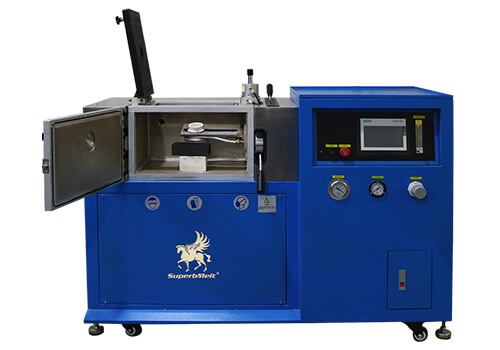
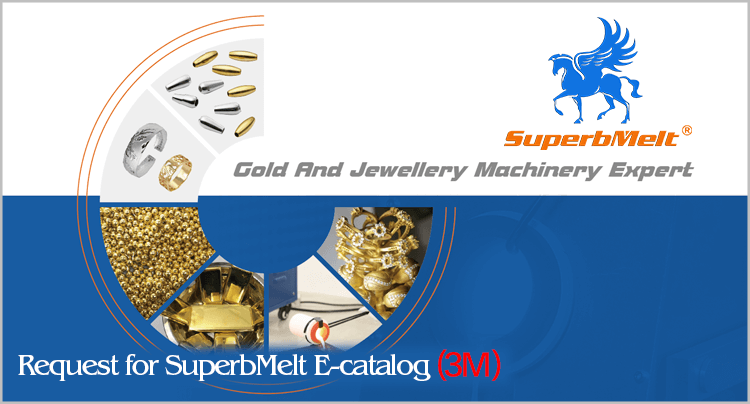
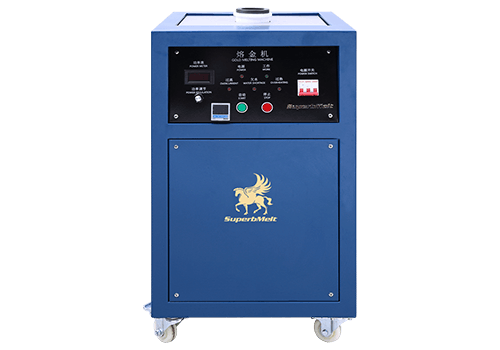
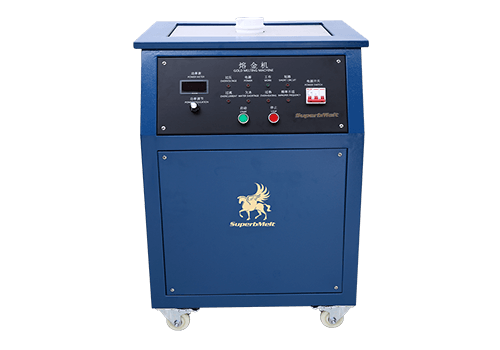
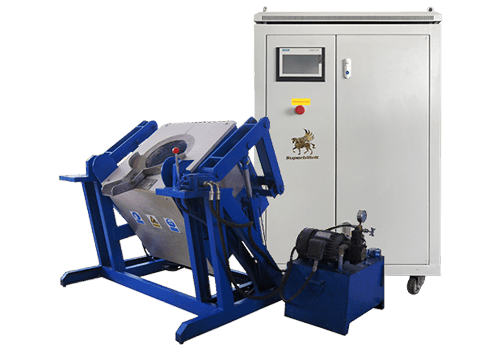
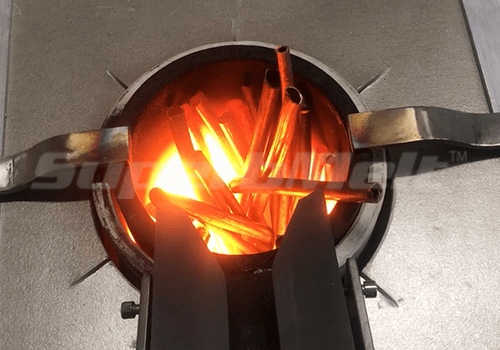
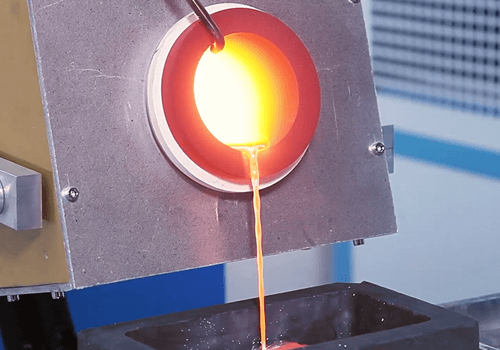
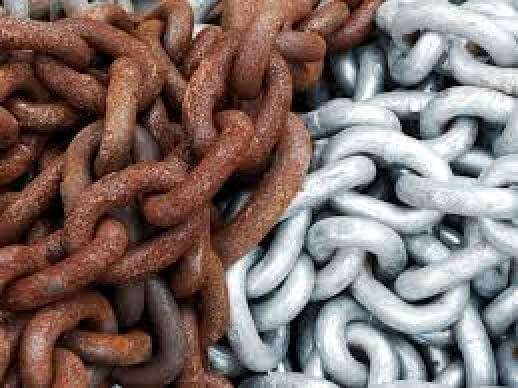
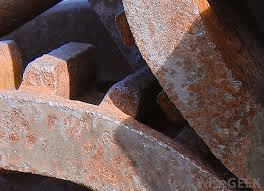

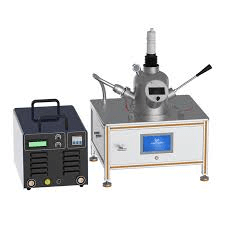
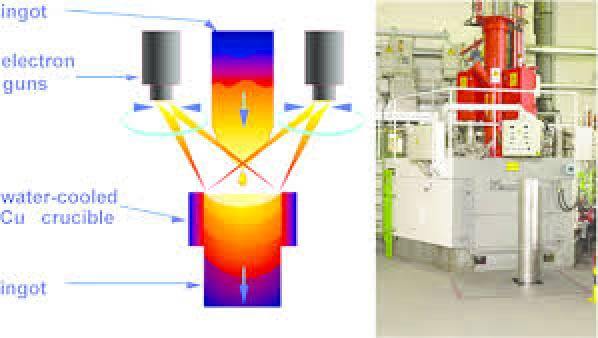
 © Copyright 2008-2021 Superb Electromachinery Co., Limited
© Copyright 2008-2021 Superb Electromachinery Co., Limited